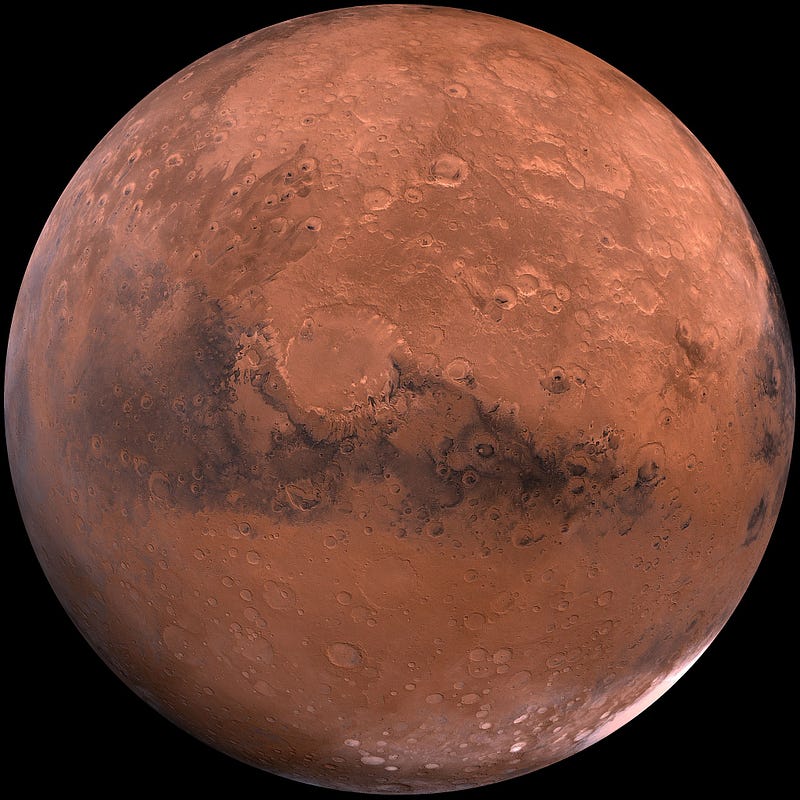Insights from Martian Seismic Waves: Unveiling Mars' Crust
Written on
Chapter 1: The Journey to Understanding Mars
Recent studies have provided valuable insights into the structure of Mars, thanks to surface seismic waves. However, when another opportunity for such analysis will arise remains uncertain.

Researchers have eagerly anticipated findings like these since February 2019, when the first seismometer in over four decades began functioning on Mars. This instrument was part of NASA's InSight geological probe, which launched in May 2018. On Earth, scientists have utilized seismometers for years to explore the planet’s internal structure. Some seismic waves generated from powerful tremors can even traverse through the Earth's core and resurface on the opposite side, yielding a wealth of information.
The Martian seismometer has detected approximately 1,300 tremors over more than three years, indicating tectonic activity on a planet once believed to be geologically dormant. By examining the seismic waves from these quakes, researchers have constructed a detailed image of Mars' interior. Its structure bears a striking resemblance to that of Earth, featuring a core with a radius of about 1,830 km, encased in a mantle approximately 1,500 km thick, and topped with a crust of rigid rocks ranging from 20 to 70 km in thickness.
However, the pivotal moment for researchers occurred on December 24, 2021, when the InSight seismometer captured data from a significant meteorite impact.
Section 1.1: A Unique Opportunity
This event was highly anticipated by geophysicists. Unlike earthquakes that originate deep within Mars, the meteorite directly impacted the planet's surface, generating an array of shallow seismic waves. These waves penetrated the crust to a depth of around 30 km, offering detailed insights into the structure of the area between the seismometer and the impact site. The Mars Reconnaissance Orbiter confirmed the existence of an impact crater approximately 150 m wide and about 3,500 km away from the seismometer.
Subsection 1.1.1: Understanding Martian Mysteries
“Mars is filled with enigmas, and one of the most significant is its current landscape, which is influenced by its crustal structure. Approximately 200 meteorites fall on the Red Planet annually. If we had multiple seismometers in place, we could gain a clearer understanding of its recent geological history and landscape evolution,” says Doyeon Kim, the lead author of the study published in Science.
Section 1.2: The Future of Martian Exploration
Sadly, the InSight mission is nearing its conclusion, and the future of the European ExoMars rover, equipped with advanced seismic technology, is in jeopardy following geopolitical tensions. This mission, a collaboration between the European Space Agency and Roscosmos, was put on hold in March, meaning that Mars might soon lack any seismic monitoring instruments once again.
Chapter 2: Insights from Recent Mars Discoveries
The first video, How Scientists Proved These Rocks Came From Mars, sheds light on recent findings regarding Martian geology and the evidence supporting these claims.
The second video, Mars Exploration Rover Discovers Strange Rocks, explores the intriguing discoveries made by the Mars Exploration Rover, further enhancing our understanding of the planet.
Thank you for reading this article! If you found the information valuable, please consider showing your appreciation with some claps or by following me. A tip would also be greatly appreciated! Thank you!